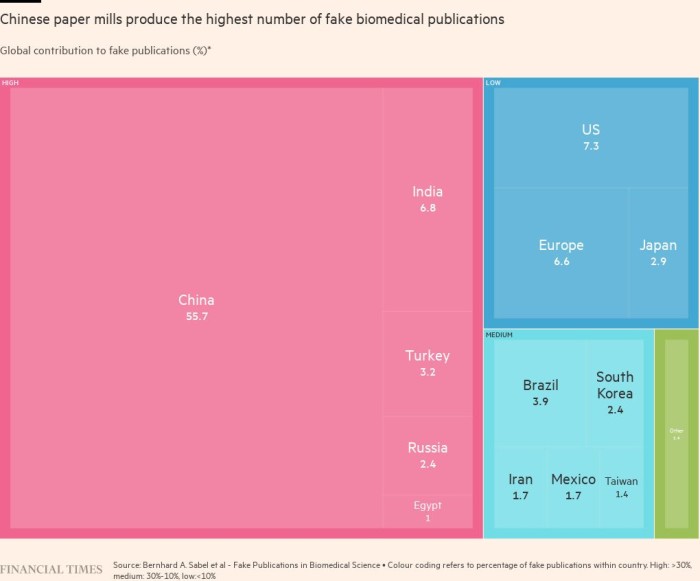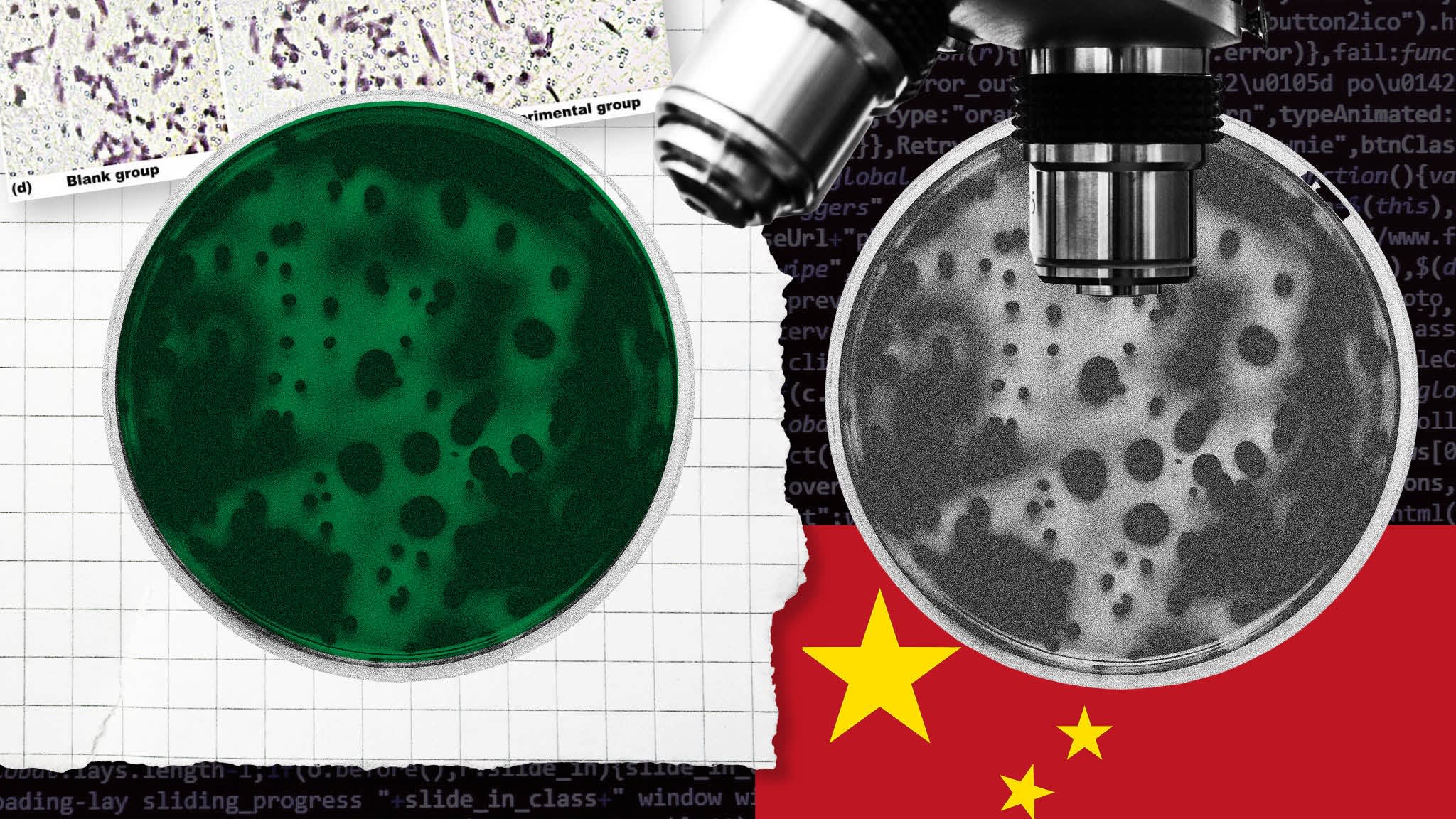Study reveals scale of ‘science scam’ in academic publishing
One in five articles published in journals may contain faked data produced by unauthorised “paper mills” that are paid to fabricate scientific submissions, according to a study by German researchers who used new techniques to “red flag” problematic papers.
The study adds to the growing evidence that academic publishing faces a damaging surge in fabricated research sold by paper mills to researchers desperate for published work to boost their careers. It also backs up recent evidence that the majority of fake research comes from China.

Most of the growing band of independent investigators who track scientific fraud analyse the content of papers and look, for example, for manipulated images and implausible genetic sequences. Academic publishers are also beginning to adopt more sophisticated fraud detection tools.

Citing the “mass production” of faked research by paper mills, the researchers also investigated the techniques used by a sector whose annual revenues were estimated at $3bn-$4bn. “They typically appear to use sophisticated AI-supported text generation, data and statistical manipulation and fabrication technologies, image and text pirating,” they said.

But the ultimate solution, Gigerenzer added, was to reduce the pressure to publish, particularly in China. Others, he suggested, could follow the example of the German Research Foundation, which tells applicants for funding that they should limit the number of their own papers cited to five.
Jennifer Byrne, an oncology professor at the University of New South Wales and leading sleuth, who was not involved in the project, said: “It’s an important study because very few studies have been published on this large scale. It is pointing to a massive problem.”
This story originally appeared on: Financial Times - Author:Clive Cookson














